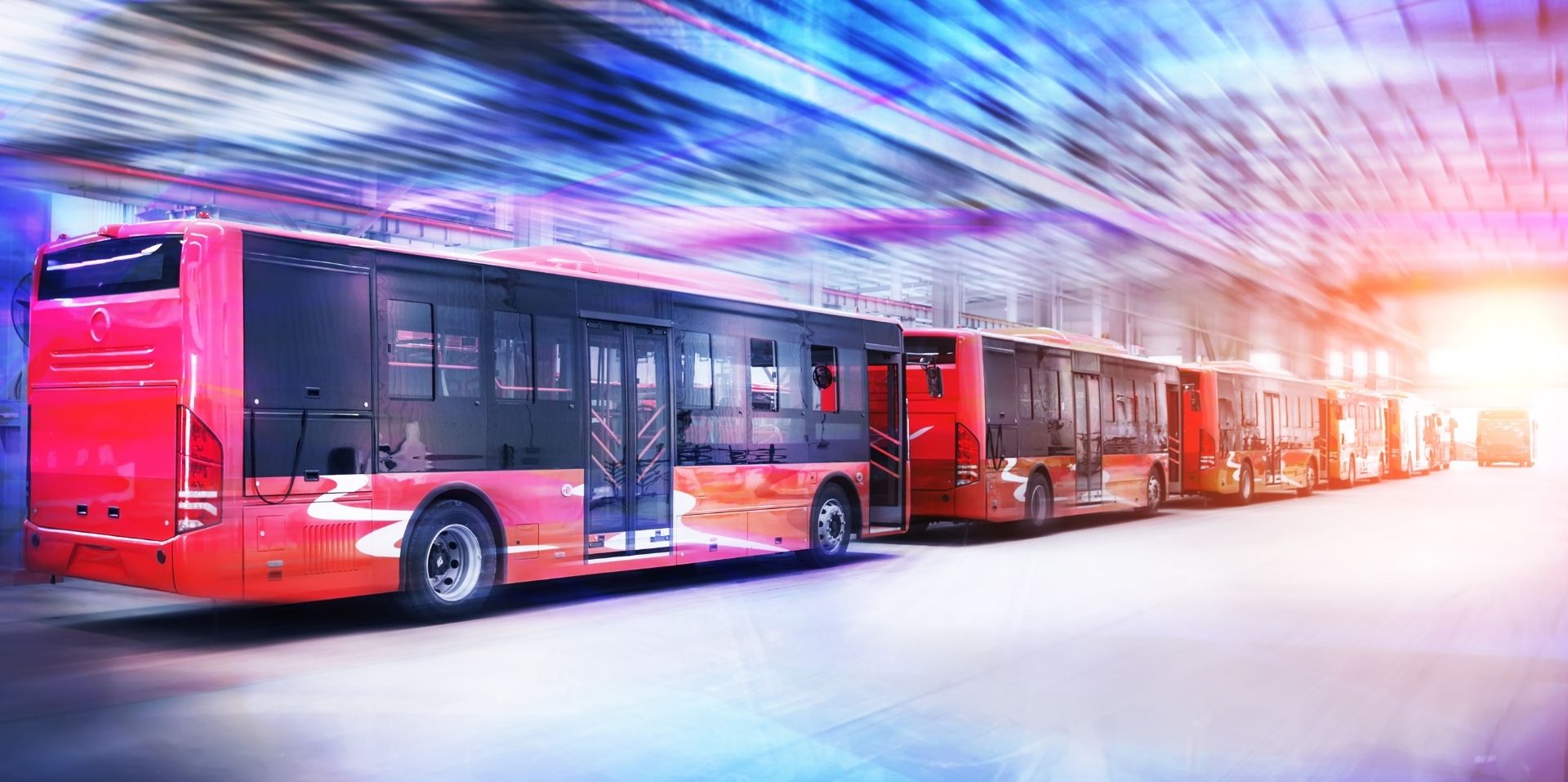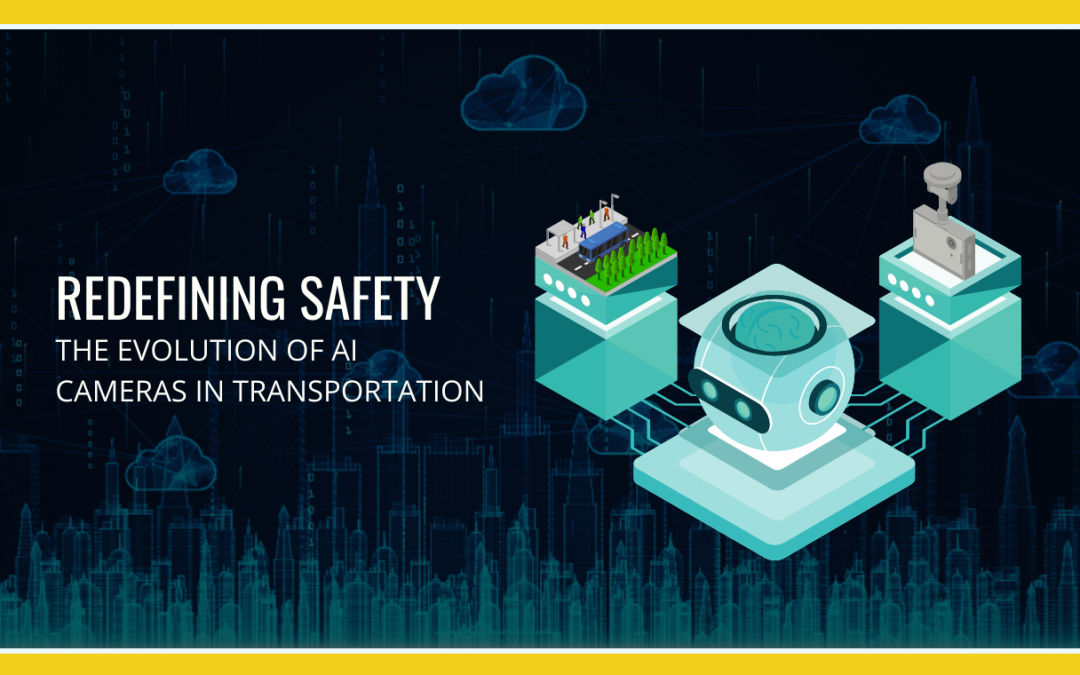Redefining Safety: The Evolution of AI Cameras in Transportation
Artificial Intelligence is becoming more and more commonplace in our daily lives. It’s already revolutionized a multitude of industries, and now it’s beginning to transform surveillance in transportation and transit systems.
Cameras have been integrated with AI, and they are a massive leap forward from point-and-shoot cameras. They can do so much more than capture images, they use machine learning and advanced algorithms to learn and ‘think’ on their own.
AI-powered cameras can detect, analyze, and respond to objects and movements, offering a higher level of security and efficiency never possible before.
This technology holds the potential to increase safety in numerous ways. They can help enforce traffic rules with better precision, alert drivers to hazards on the road or even recognize if a driver is distracted.
There are different types of AI cameras, and they each have the ability to revolutionize the transportation industry.
AI cameras are going to play a larger role in our increasingly automated and interconnected world and the more we understand their capabilities, the more we can make our cities smarter and safer.
What are AI Cameras?
An AI camera is a camera that incorporates artificial intelligence to enhance its capabilities.
AI cameras use technology like machine learning to give surveillance systems the ability to do things never possible before.
Unlike conventional cameras that simply capture and relay images, AI cameras have analytical capabilities, which give them the ability to interpret scenes, recognize objects, and make decisions based on real-time data.
How Do They Work?
At the core of AI cameras is what’s known as machine vision. It’s a computational process that’s similar to the way that human sight works.
Machine vision uses a series of algorithms to compare whatever object the camera is observing against reference images stored within its database.
Using this process, the AI camera can determine multiple factors such as size, speed, and orientation, to help it identify and categorize what it’s observing.
Real-Time Analysis and Response
One of the defining features of AI cameras is their ability to perform real-time analysis.
They are continuously scanning every corner of every single frame, ensuring nothing goes unnoticed.
Imagine someone who was watching a surveillance feed 24/7 and never missed a detail. That’s the power of AI, they can monitor public safety, operation processes, traffic patterns and so much more.
In today’s evolving technological landscape, AI cameras are vital tools in transportation that can be used to enhance safety, security, and operations.
Types of AI Cameras
There is more than one type of AI camera, and they each have their own distinct purposes and capabilities.
Understanding the different types is key in recognizing their potential for how they can be used in different scenarios.
Rule-Based AI Cameras
Rule-based AI cameras function on what are called predetermined settings.
What this means is that programmers set ‘rules’ that the camera’s AI must adhere to.
For instance, a camera could be programmed to send alerts if it detects a car is drifting lanes.
These cameras excel in maintaining constant surveillance and reducing risk, as they can recognize when there is a potentially hazardous situation and intervene.
The AI Dash Cam from Gatekeeper has a variety of rules that it can detect and send alerts to the driver. The AI Dash Cam is able to detect if the car is drifting out of its lane, if it’s too close to the car in front, if the lens is covered, if the driver is distracted, and even if the driver is tired and yawning.
It’s like having a vigilant copilot that is constantly analyzing road conditions, driver behavior, and vehicle positioning. The potential to use this technology to make transportation safer is unprecedented.
Event-Triggered AI Cameras
Event-triggered AI cameras are designed to respond to specific incidents or conditions, making them adept at capturing crucial evidence when needed.
Gatekeeper’s School Bus Student Protector incorporates an AI camera that can detect if a car drives past a bus when the stop arm is extended.
If a car passes a school bus when the stop arm is extended, the camera detects the violation and begins recording the incident so that it’s captured on video and is easy to extract and review.
These cameras ensure that the correct footage always gets captured, and operators don’t have to search through hours of data to find the incident.
Behavior-Based AI Cameras
Behavior-based AI cameras are the newest type of AI technology in surveillance.
They use behavioral analytics to self-learn normal patterns and are finely tuned to notice any anomalies that break that pattern.
They do not rely on predefined rules. Instead, they are more dynamic and we are just beginning to understand their capabilities.
For instance, in a city street, a behavior-based AI camera could monitor vehicle and pedestrian traffic and learn the normal flow and patterns of the street.
If an unexpected event happens, like a car driving up onto the sidewalk, the camera can instantly recognize this anomaly and send an alert to the authorities.
What this means is that the camera has the autonomy to read and react instantly, which has the potential to drastically improve safety wherever these cameras are used.
Conclusion
AI cameras are more than just an extra set of eyes. They are active participants in making transportation safer and more efficient.
From rule-based AI cameras that vigilantly monitor roads for hazards, to event-triggered ones that capture crucial evidence during specific incidents, and behavior-based AI cameras that continually learn and adapt to normal patterns, the transformative potential of these cameras is immense.
This technology is here to stay and the integration of AI cameras into transportation is already actively shaping and refining the dynamics of the industry.
In the vast, interconnected world of transportation, AI cameras stand out as pioneering tools, offering solutions to longstanding challenges, and paving the way for a safer, more secure future on the roads.





